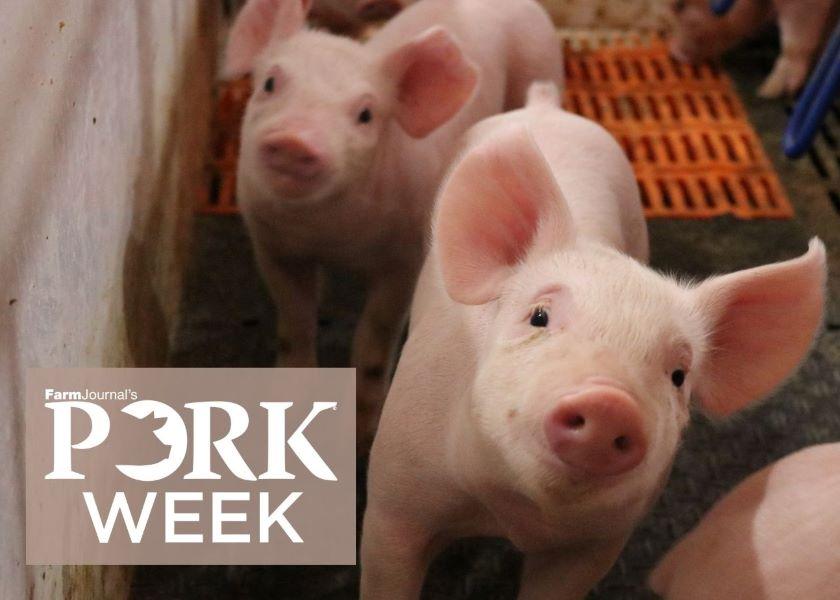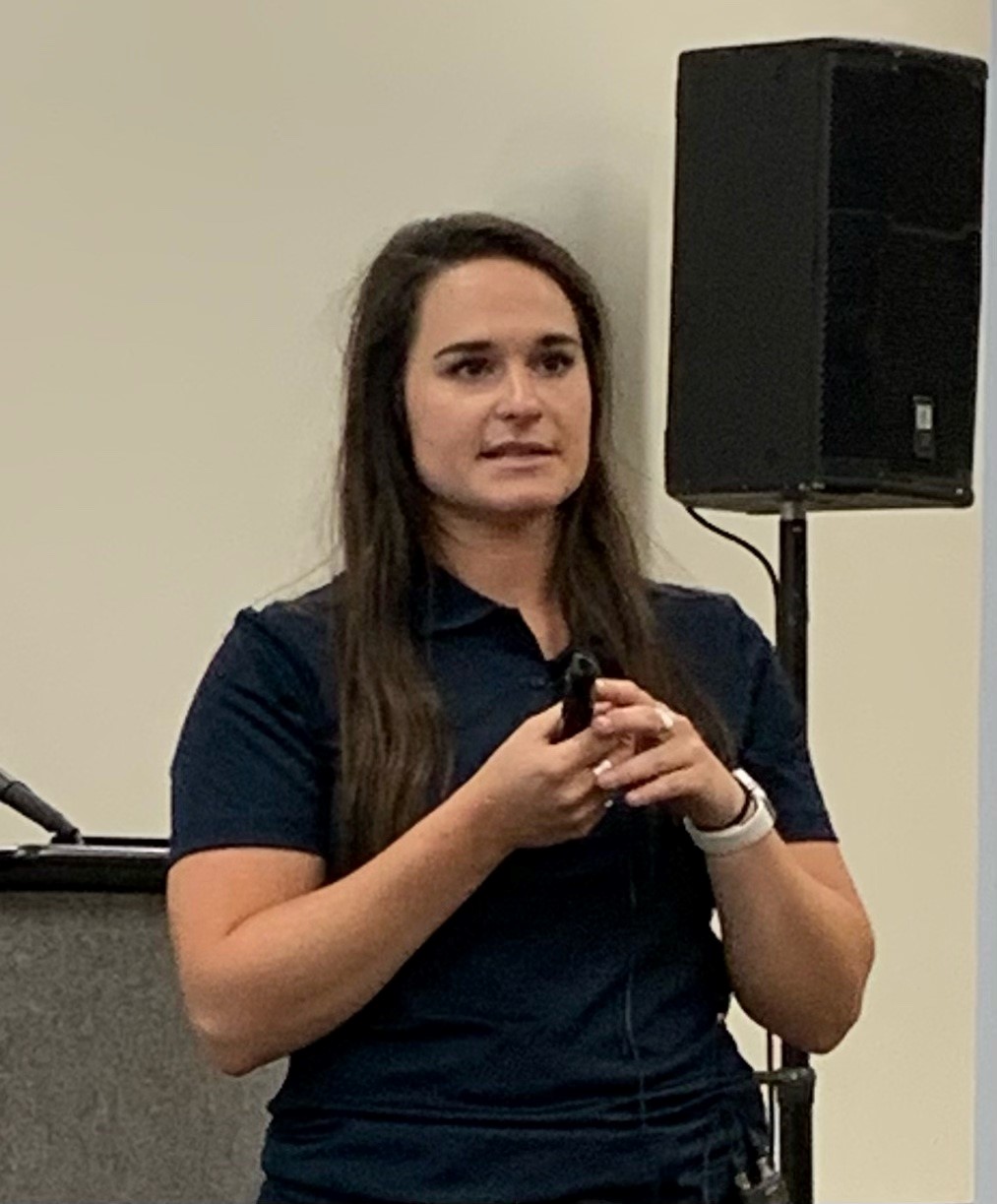Learn Your ABCs to Improve Pig Treatment Outcomes

Early identification of an illness is an important step in preventing disease agents from spreading through a barn like wildfire. It’s also a way to ensure best management and sound animal welfare practices are followed. However, sometimes employees are unsure what signs to look for when a pig is under duress. What’s needed is a defined, common vocabulary, says Emma Lasco, pork production specialist, Zoetis.
“The vocabulary helps producers and employees identify the signs they can look for when a pig starts to fall out,” she said during at presentation at the 2021 World Pork Expo.

Emma Lasco discusses baby pig care at the World Pork Expo in Des Moines, Iowa.
With the ranking system described below, employees can be trained to observe and take quick action.
A Pig – Acute
• Slightly gaunt in flanks
• May appear withdrawn from group
• May show difficulty breathing
• Depressed
• Full fresh or bloom from above
• Listless ears
• May be feverish
• Dull, red or weepy eyes
B Pig – Subacute
• Definite gauntness
• Thinner, slab side showing signs of flesh loss
• Uncomfortable posture
• Bullied or pushed to back of herd
• Rough or soiled hair coat
• Shoulder blades and spine begin to show
• Listless ears
• Black exudate, crust around eyes
C Pig – Chronic illness
• Severe gauntness, flesh loss
• Definite signs of lameness
• Difficulty breathing
• Severely depressed when left alone
• Cannot keep up with herd
• Soiled hair coats
• Likely showing areas of spine
• Listless ears
• Black exudate, crust around eyes
E Pig – Euthanize
• Not recovering, needs to be euthanized
• Minimal improvement, poor prospect of improvement following previous treatment
• Severely injured or non-ambulatory with inability to recover
• Immobilized with a body condition score of 1
• A resource on swine euthanasia is available from the Pork Checkoff
After explaining the characteristics, Lasco quizzed attendees by showing them pictures of pigs and having them predict the categories in which they’d place the pigs. For the most part, the audience was quite accurate.
In a barn setting, Lasco would walk the pens with managers and caregivers, talk about individual pigs and identify the categories in which they might fit. During her presentation, she encouraged attendees to take the new vocabulary home and quiz themselves, to be better prepared to evaluate pigs in their barns.
“Overall training might take a week of walking the barn and talking about what choring really looks like,” Lasco says. “This is a tool to use in that training.”
Producers should look at a pig’s head, body fill, tissue hydration (pale or anemic), color, posture, depression and social behavior.
The universal defined vocabulary will help producers know which pigs have the potential for high, moderate or low treatment success, says Lasco. Bottom line, “You’ll have healthier pigs if you catch illness sooner. By using this opportunity stage, you likely won’t have to treat the whole pen or the whole barn,” she notes.
Be the Early Bird
“Early recognition is the first step to successfully managing a disease outbreak or illness in your herd,” writes M.R. Muirhead in Managing Pig Health. “Every day, a clinical examination of all pigs should be carried out. How many managers organizing their farms allow such a time period for this function?”
Hopefully the common vocabulary and step-by-step observation details will encourage more producers to incorporate this process.







